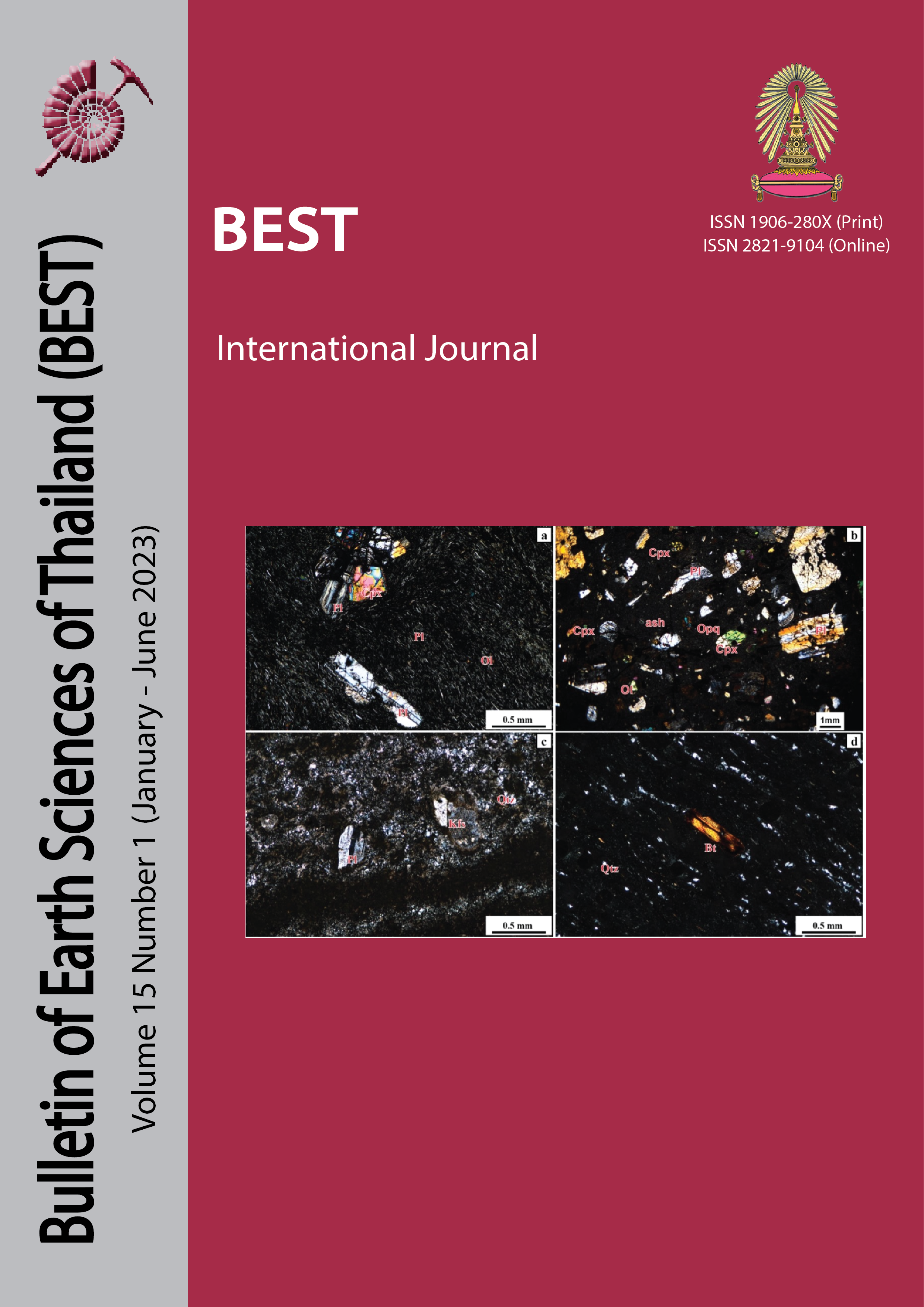Petrography and mineral chemistry of Cenozoic volcanic rocks in Lop Buri area, central Thailand: Implication for crystallization condition and petrogenesis
Main Article Content
Abstract
The Cenozoic volcanic rocks distributed in the Lop Buri area, central Thailand were investigated for petrographic and mineral chemistry studies. The petrographic examination revealed three main rock types: basalt, basaltic tuff, and rhyolite, distinguished by their mineral compositions and textures. Basalt exhibits a trachytic texture, while basaltic tuff is characterized by the presence of pyroclastic materials, including crystal ashes. Rhyolite typically displays a rhyolitic flow and spherulitic texture. Despite the textural differences, basalt and basaltic tuff share similar mineral compositions, predominantly consisting of plagioclase, clinopyroxene, olivine, and accessory opaque minerals of titanomagnetite, and titanohematite. In contrast, rhyolite is composed of quartz, K-feldspar, plagioclase, biotite, and titanomagnetite. Further analysis of the magnetite in these volcanic rocks confirmed its primary igneous rocks. Crystallization temperature calculations calculated by the magnetite composition indicate temperatures of approximately 758 – 981 °C for basalt, 559 – 738 °C for basaltic tuff, and 672 – 880 °C for rhyolite. These volcanic rocks should be originated from the extensional setting resulted from India-Eurasia collision.
Article Details

This work is licensed under a Creative Commons Attribution-NonCommercial-NoDerivatives 4.0 International License.
Copyright © 2008 Department of Geology, Faculty of Science, Chulalongkorn University. Parts of an article can be photocopied or reproduced without prior written permission from the author(s), but due acknowledgments should be stated or cited accordingly.


